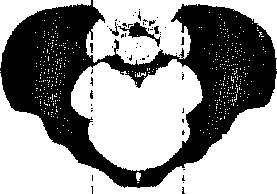Вступний фонетикоорфоепічний курс вступ
 Скачать 25.36 Mb. Скачать 25.36 Mb.
|
I. Speaking: Skeleton After careful study of this unit you should be able to:
Exercise 1. Read and learn the following words, remember their Latin or Greek equivalents.
Exercise 2. Read the texts A and B. Try to understand them without using a dictionary. Text A. Skeleton The skeleton is composed of bones. In the adult the skeleton has over 200 bones. The bones of the skull consist of cranial and facial parts. There are 26 bones in the skull. The bones of the trunk are the spinal column or the spine and the chest (ribs and breastbone). The spine consists of the cervical, thoracic, lumbar and sacral vertebrae and the coccyx. The vertebra is a small bone, which is formed by the body and the arch. All the vertebrae compose the spinal column or the spine. There are 32 or 34 vertebrae in the spine of the adult. In the spinal column there arc seven cervical vertebrae, twelve thoracic vertebrae, five lumbar, five sacral vertebrae and from one to five vertebrae which form the coccyx. The cervical part of the spine is formed by seven cervical vertebrae. Twelve thoracic vertebrae have large bodies. The lumbar vertebrae are the largest vertebrae in the spinal column. They have oval bodies. The chest (thorax) is composed of 12 thoracic vertebrae, the breastbone and 12 pairs of ribs. The breastbone is a long bone in the middle of the chest. It is composed of three main parts. The basic part of the chest is formed by the ribs. On each side of the chest seven ribs are connected with the breastbone by cartilages. The cartilages of three other ribs are connected with each other and with the seventh rib. But the cartilages of these ribs are not connected with the breastbone. The eleventh and twelfth ribs are not connected with the breastbone either (також). They are not connected with other ribs, they are free. Each rib is composed of a head, a neck and a body. The lower extremity consists of the thigh, leg and foot. It is connected with the trunk by the pelvis. The upper extremity is formed by the arm, forearm and hand. It is connected with the trunk by the shoulder girdle. The bones of the skeleton are connected together by the joints or by the cartilages and ligaments. The bones consist of organic and inorganic substances. Text B. Skull The main part of the head and face is called the skull. The skull is composed of twenty-six bones. These bones form two basic parts of the skull, they are facial and cranial parts. The bones of the skull are connected together so firmly (міцно) that is very difficult to separate them. The bones of the skull form one large cavity and some smaller cavities. The large cavity is called the cranial cavity. The brain is in the cranial cavity. One of the smaller cavities is the oral cavity and the other is the cavity of the nose. The other two cavities are the orbits. The eyeballs are in the orbits. Exercise 3. Ask your friend to name all the bones of the skull (use Fig. 5-1). Exercise 4. Look at Fig. 5-2 and describe the human skeleton.  Exercise 5. In the Fig. 5-3 you can see the vertebral column. How many parts does the vertebral column have? Name all of them. How many vertebrae does each of them have? Exercise 6. Look at the pelvic girdle in Fig. 5-4. Name all its bones and their location. Exercise 7. Describe the differences between the male pelvis and the female pelvis (use Fig. 5-5). II. Grammar Exercises Exercise 1. Write out sentences with the infinitive, name its forms. The skeleton is the framework of the human body. It serves to support the body and protect its internal organs. Two hundred and six bones compose the skeleton, about half of which are to compose the hands and the feet. cranium. facial bones ■ -mandible — , clavicle - scapula sternum costal cartilage — humerus I Y-%V ribs vertebral J column j — radius ulna . pelvis ' / sacrum carpals 4 j.'' j metacarpals - phalanges - femur knee joint patella — tibia - ankle — fibula — calcaneus axial skeleton tarsals - metatarsals ' phalanges • appendicu skeleton . 5-2. The skeleton ilium ischial spine anterior superior iliac spine acetabulum (socket for femur) symphysis pubis   male pelvis from above ihaL cresl ilium acetabulum pubis female pelvis from above  side view of male pelvis Fig. 5-5. Pelvic girdle: male pelvis and female oelvis The flexible joints are used to connect the bones together. They allow the bones to move. Only one bone is not connected to another bone. It is the hyoid, it anchors the tongue and is attached to the styloid processes of the skull by ligament. Notes: hyoid ['habid] під'язикова кістка styloid ['staibid] шилоподібний відросток I want I'd like He agreed The wounded asked She likes You can Exercise 2. Make up sentences, translate them. Name the forms of the infinitive. (to) be helped. (to) speak about the skeleton, (to) describe the structure of it. (to) name all possible fractures, (to) be examined by the doctor, (to) define this word meaning. Exercise 3. Translate the sentences into English. Name the form of the infinitive.
Exercise 4. Translate the sentences, remember that the infinitive shows the following action. Model: He came to find the door locked. Він прийшов і виявив, що двері замкнені.
3. This substance interacts with many hormones to give identical or different metabolic processes.
Exercise 5. Test yourself. Translate the following words into Ukrainian. Show the bones on the skeleton.
|
